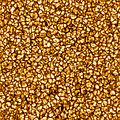Photosphere facts for kids
A photosphere is like the "surface" of a star that we can see. It's the part of a star where light finally escapes into space. Imagine it as the deepest layer of a star that is clear enough for light particles, called photons, to travel through. This is the light that reaches our eyes and telescopes.
Contents
What is a Photosphere?
The photosphere is the visible outer layer of a star. It's not a solid surface like Earth's ground. Instead, it's a layer of very hot gas. This gas is dense enough to stop light from deeper inside the star. But it's also thin enough for light to pass through it and travel outwards.
Why Can We See It?
Light is made of tiny energy packets called photons. Deep inside a star, photons bounce around a lot. They hit other particles and can't travel far. But in the photosphere, the gas is less dense. This means photons can finally escape. They travel straight out into space. This is why we see the photosphere as the star's bright "surface."
The Sun's Photosphere
Our own Sun has a photosphere. It's the part of the Sun we see every day. The Sun's photosphere is about 100 to 400 kilometers (60 to 250 miles) thick. This might sound thick, but it's very thin compared to the Sun's total size. The temperature in the Sun's photosphere is about 5,500 degrees Celsius (9,940 degrees Fahrenheit). This is much cooler than the Sun's core, but still incredibly hot!
Granulation on the Sun's Surface
If you look closely at the Sun's photosphere, you might see a pattern. It looks a bit like boiling rice. This pattern is called granulation. It happens because hot gas rises from inside the Sun. It then cools and sinks back down. Each "grain" or granule is about 1,000 kilometers (620 miles) wide. They only last for about 8 to 20 minutes before new ones form.
Sunspots and the Photosphere
Sometimes, dark spots appear on the Sun's photosphere. These are called sunspots. Sunspots are areas where the Sun's magnetic field is very strong. This strong magnetic field stops heat from reaching the surface. Because they are cooler than the surrounding photosphere, they look darker. Sunspots can be much larger than Earth!
How is Light Made in the Photosphere?
The light we see from a star comes from its photosphere. Inside the star, nuclear reactions create huge amounts of energy. This energy slowly moves outwards. When it reaches the photosphere, the energy is released as light. This light then travels across space to us. Different stars have different temperatures in their photospheres. This affects the color of the light they give off. Hotter stars look blue, while cooler stars look red.
Images for kids
-
Solar atmosphere: temperature and density. See here for meanings of extra lines in the graph.
See also
 In Spanish: Fotosfera para niños
In Spanish: Fotosfera para niños



